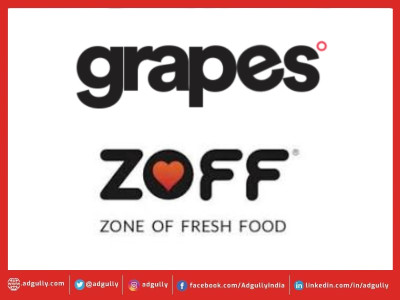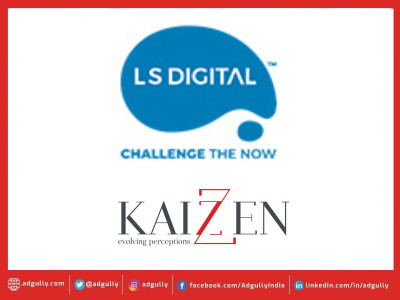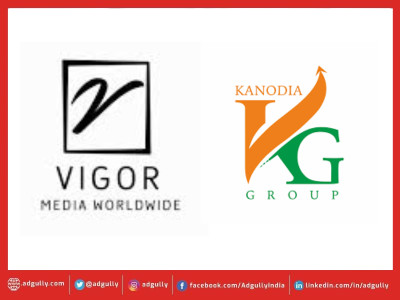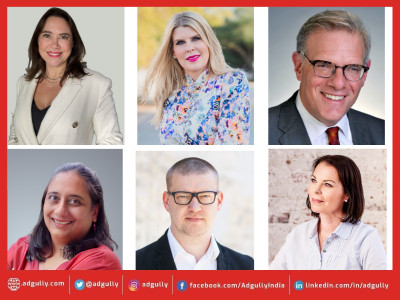PR, today, holds as much importance as digital marketing: Bhavya Suri
As part of our series on ‘PR Conversation’, we at Adgully are speaking to some of the industry leaders from both PR agencies and the corporate communications world about how PR as a business and communication tool has evolved and grown over the years. In the last 10 years, PR has taken a different dimension, especially after the entry of social media in a big way. While the PR business has grown, some of the challenges that the industry is facing have also multiplied as clients are becoming more demanding and are expecting their consultants to be on their toes to manage their brand reputation, as news today travels fast and clients are expecting quick response and action in case of a crisis situation.
In conversation with Adgully, Bhavya Suri, Director - PR & Corporate Affairs, India & MENA, Pearson, speaks about the transformation in the PR industry over the years, creating a positive outlook among the budding professionals towards PR as a career option, the growing significance of AI and other technological enhancements for the PR industry and much more.
You have been in the PR world for over a decade. What are the new dimensions and trends that you have seen in PR in these years? What is the road ahead going to look for the PR industry for the next 5 years?
The PR industry in India has kept pace with the continued transformation during the last 10 years, keeping in mind all social and technological aspects. The significance of PR and the value it brings to the table has now been recognised by brands and companies both. With the pandemic bringing in behavioural changes in the audience and the drastic transitions taking place within the media landscape, it has changed the role of PR professionals entirely.
With this evolution, PR needs to be strategically planned and executed, thereby making its way within integrated marketing and promotional activities in order to help reap significant benefits. Public relations, today, holds as much importance as digital marketing, social media, and influencer marketing, and maybe more since it brings in earned media value. Public relations has moved miles from traditional press to effective community building and strategic consulting, which has presented potential opportunities for us to be planners and enablers and not executors of press releases anymore. We, at Pearson, have constant engagement with teachers, educators, academicians, schools, institutes, etc., with PR playing a pivotal role in execution of our plans.
Additionally, the new age PR practices have started exploring the technological advancements like analytics, AI, big data and IoT. The decade will witness more usage of these advancements and try to ease the complex work.
Digital has become a powerful communication tool and managing online reputation is a challenge as the medium is dynamic as news travels fast. How is your company geared to manage the online reputation to project a positive image and maintain the brand equity?
With the consumer base leaping towards a digital-oriented ecosystem, mainstream print media coverage is no more the staple ones for organisations. From changing approach for pitches to media, which now take place in digitised formats, we have witnessed evolved ways of using content. It has now become more engaging with the use of infographics, videos and interactive content.
Pearson, which is fundamentally a digital based organisation, is laying heavy emphasis in digital campaigns now. Digital-first approach will help brands realise their aspirations by focusing more on digitally driven campaigns. From being an afterthought earlier, to now being a part of every communication’s core strategy, digital will help organisations keep in sync with altered customer behaviour and sentiments.
AI and other technological enhancements will further lend to this transformation, allowing digital marketers to get past the content overload and streamline copious amounts of data, eventually helping all stakeholders to make better decisions.
We all speak about external communication, but equally important is internal communication, which needs to be handled with kid gloves. What are your views on this and how important is the role of internal communication especially during the pandemic when you had to stay engaged with your employees?
Internal communication plays an important role in ensuring that our people understand and contribute in building the culture and values of the organisation. It is also significant in reaching out to our people to address the issues they are facing due to the change in work and how we can support them to do better. It includes creating a best environment in the organisation, taking care of their mental wellness and steps being taken to help ease fears.
Hopefully, 2021 is going to be an important year of recovery and internal communication will be crucial to keep people focussed and committed.
As an organisation, Pearson has a people first approach and our people have contributed significantly last year. We remain steadfast to their mental and physical wellbeing.
PR measurement and effectiveness of PR has always been a subject of debate. As a PR professional, what steps the PR industry should take to bring in uniformity so that everyone speaks one language when it comes to PR measurement?
Measurement of PR efforts is fundamental to the field of communication. Relying on traditional metrics such as reach and impressions in isolation often doesn’t result in a clear, concise understanding of the performance of a PR activity. There is a greater need to consistently evaluate all forms of PR – be it traditional or digital – based on both qualitative and quantitative methods. There has been an increased focus on measuring the outcomes which showcase the behavioural changes catalysed by a particular campaign rather than the measurement of output.
I do believe that Machine Learning and AI can go a long way in fixing the accuracy problems in PR, which need significant amount of improvement in the current state. Such tools can help produce data that can convince the senior leadership to do the right thing.
Getting the right skillset and training has always been a challenge in the PR profession. What is your view on the same and what would be the valuable tips that you would like to give to the budding young PR professionals?
PR has historically failed to attract talent at all levels, majorly due to a lack of awareness about what the industry entails. Nearly every person you meet in PR will tell you that very few of their friends and family understand what they do. If we can’t make those closest to us understand our daily jobs, how can we share that more broadly? This is unfortunate because PR is one of the most exciting communications disciplines. On any given day, our roles may be founded in comms strategy planning, content production, publicity strategy, event planning, influencer marketing, crisis management, and so on. We create thought leaders, orchestrate high scale planning and fuel conversations. However, with the recent transformation in the industry, with PR taking a centre stage across organisations to effectively communicate with the audience, we have witnessed a positive outlook among the budding professionals towards PR as a career option. There are high possibilities of the sustenance of this trend as we move closer to integrated communications.
Do you feel the traditional role of interpersonal communication which was so critical to the profession has somehow been put to the back burner because of too much virtual engagement? How are you experiencing that, is it bringing down the efficiency and the final output?
The workplace and industry have rapidly evolved since the coronavirus outbreak. There has been a fundamental change in the way organisations communicate internally and externally.
In my opinion, virtual meetings are one of the few positive developments that have emerged during 2020 and this trend is here to stay as it provides a much-needed tool to boost diversity, workplace inclusion, and work-life balance with critically hampering the productivity.
Though many companies are getting back to the pre-COVID ways of work, it will take long before normalcy resumes and there are possibilities of organisations never heading back to what it initially was. The likeliest scenario is a hybrid of new developments and what used to be. Award shows, industry conferences, regular events would likely be conducted in a virtual environment as it pulls more audience, increased website traffic, and allows connectivity with audiences and stakeholders from across the globe.
Your PR partner plays an important role in building your brand reputation and also helps you in shaping a positive opinion of the company. How do you measure your agency’s performance and evaluate them every year?
Undoubtedly, PR partner plays a crucial role in building brand reputation and Genesis BCW has been immensely supportive in shaping positive opinions for our company through their strategic communication. We have set Key Performance Indicator (KPI) to measure the value of activities aligned with how effectively a company is achieving key business objectives. Every year, we share The SQI score, which helps us to evaluate the success as per the set targets and progress accordingly.























Share
Facebook
YouTube
Tweet
Twitter
LinkedIn